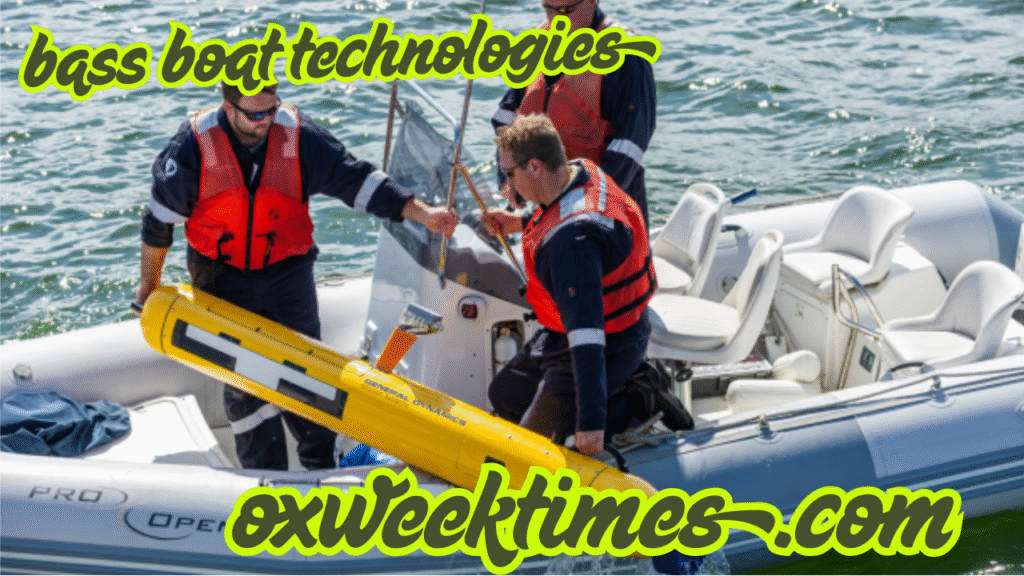
Bass boat technology have gone a long way from basic aluminum hulls and gasoline motors. In today’s fishing world, serious fishermen and devoted enthusiasts alike depend largely on cutting-edge developments to obtain a meaningful advantage on the lake. From GPS-guided trolling motors to real-time sonar imaging, bass boat technology continue to improve rapidly—reshaping how anglers fish, maneuver, and maintain their gear.
In this article, we’ll explore various aspects of modern bass boat technologies, examine the role of electronics and automation, discuss how boat design has changed over time, and look at future trends that may soon dominate the industry. Whether you’re a seasoned tournament pro or just getting into bass fishing, understanding these technologies will dramatically change how you approach your time on the water.
The Evolution of Bass Boat Technologies

Bass boats were historically modest watercraft, generally furnished with nothing more than a tiny outboard engine and a rudimentary fish detector. Fast forward to now, and bass boats are highly specialized, high-performance machines geared for speed, stealth, and data-driven fishing. Over the years, advances have evolved across hull design, propulsion, onboard electronics, and fish-finding capabilities.
Materials have switched from aluminum to sophisticated composites and fiberglass, lowering weight while enhancing strength and performance. Hydrodynamics and hull design are now improved using computer modeling to minimize drag and boost top-end speed. These core developments laid the groundwork for more complex bass boat technology that came later.
Advanced Sonar and Imaging Systems

One of the most significant developments in bass boat technologies has been the transformation of sonar and fish-finding systems. Today’s sonar systems do more than locate fish—they give anglers detailed, three-dimensional, real-time views of underwater terrain and fish behavior.
Key sonar innovations include:
- CHIRP Sonar (Compressed High-Intensity Radar Pulse): Offers increased target separation and depth range by transmitting a continuous sweep of frequencies.
- Side Imaging and Down Imaging: Enables scanning of broad regions to the sides and immediately below the boat, enabling fishermen to locate fish-holding features like brush piles, boulders, or ledges.
- Live Sonar (e.g., Garmin LiveScope, Lowrance ActiveTarget, Humminbird MEGA Live): Provides real-time video-like views of fish and lures in motion, radically altering how anglers find and present baits.
These imaging systems are now fully integrated with multi-functional displays (MFDs), allowing for touchscreen control, customizable views, and even map overlays that combine sonar data with GPS positioning.
GPS Integration and Smart Navigation

Navigation technology has made massive strides in bass boat technologies. High-precision GPS systems allow anglers to mark waypoints, track movement history, and even control motors through autopilot functions. These systems can operate within a few inches of accuracy thanks to differential GPS and satellite corrections.
Common GPS-related features include:
Spot Lock (GPS Anchoring): Automatically keeps the boat in place despite wind or tide using a trolling motor.
Route Recording and AutoPilot: Enables automated navigation to pre-set places with the push of a button.
Mapping Software Integration: Allows real-time contour mapping of lakes, reservoirs, and river systems, offering a dynamic picture of underwater terrain.
These GPS-powered features have made bass fishing more efficient and productive by reducing guesswork and allowing anglers to focus more on fishing than boat control.
Trolling Motor Technologies
Modern trolling motors are smarter, quieter, and more efficient than ever. In competitive bass fishing, subtlety and precision are key. This is why today’s trolling motors combine integrated GPS, wireless control, and brushless motors for ultra-quiet operation.
Leading trolling motor technologies:
- Minn Kota Ultrex and PowerDrive, Garmin Force, and Lowrance Ghost: All feature GPS-guided control, variable speed settings, and low noise.
- Wireless Foot Pedals and Remote Controls: Enable hands-free navigation and fine motor adjustments.
- Integrated Sonar Transducers: Some trolling motors come equipped with sonar built directly into the shaft, simplifying installation and reducing cable clutter.
Many systems allow integration with fish finders, letting anglers steer the boat and adjust trolling speed directly from the sonar unit’s interface.
Battery and Power Management Systems
Another area of significant advancement in bass boat technologies is power management. High-demand electronics and accessories mean boats now need reliable, long-lasting power sources and smart charging systems.
Trends in power technologies:
- Lithium-Ion Batteries: Lighter, longer-lasting, and faster-charging than traditional lead-acid batteries. They also offer more consistent voltage, which is critical for sensitive electronics.
- Smart Battery Management Systems (BMS): Monitor battery health, prevent overcharging, and provide real-time status updates.
- Onboard Charging Systems: Allow batteries to be charged quickly and safely between outings without removing them from the boat.
As boats carry more screens, motors, and accessories, having a reliable and scalable power system has become a cornerstone of modern bass boat design.
Onboard Connectivity and Integrated Systems
Today’s bass boats are becoming increasingly “connected.” Through NMEA 2000 and Ethernet networking protocols, devices can communicate with each other, creating a seamless system where data flows across electronics in real time.
Integration benefits:
- Fish finders display trolling motor direction and status.
- GPS controls anchor lock while simultaneously updating sonar data.
- Engine diagnostics and fuel data appear on central screens.
This connectivity turns the bass boat into a fully integrated command center, giving the angler maximum situational awareness and control with minimal distraction.
Hull and Performance Enhancements
Even with all the electronics onboard, the performance of the boat itself remains vital. Hull design, materials, and propulsion systems are constantly evolving to provide smoother rides, higher top speeds, and better fuel economy.
Modern performance features include:
- Pad Hull Designs: Reduce drag and boost speed without sacrificing stability.
- Setback Jack Plates: Adjust engine height for optimal performance in varying water conditions.
- Lift and Trim Systems: Provide real-time adjustments to ride height and angle for efficiency and speed.
These performance-focused bass boat technologies help anglers cover more water quickly and safely while ensuring comfort in both calm and choppy conditions.
The Future of Bass Boat Technologies??
Looking ahead, bass boat technologies will likely continue their trajectory toward automation, efficiency, and environmental sustainability.
Emerging trends include:
- Electric Propulsion: Entirely electric bass boats are in development, offering quiet operation and zero emissions.
- AI-Powered Systems: Future sonar and navigation tools may analyze fishing patterns and suggest strategies based on past success.
- Augmented Reality (AR): AR displays on windshields or visors could project maps, fish locations, and sonar overlays in real time.
- Self-Docking and Autopilot Fishing: We may see bass boats that can position themselves, track fish, and maintain optimal lure presentation with minimal human input.
These futuristic ideas aren’t as far off as they seem. As competition drives demand for more precision and performance, bass boat manufacturers will continue investing in smarter, more capable technologies.
Conclusion: Embracing the New Era of Bass Boat Technologies
The world of bass fishing has transformed dramatically due to the rise of advanced bass boat technologies. From cutting-edge sonar systems to GPS-guided motors and fully integrated electronic dashboards, these innovations help anglers fish smarter, not harder.
Whether you’re a weekend warrior or a tournament veteran, staying informed about the latest in bass boat technologies is key to staying competitive—and maximizing every moment on the water. As the next wave of advancements arrives, it’s clear that the only limit is how far technology can go to enhance the bass fishing experience.




